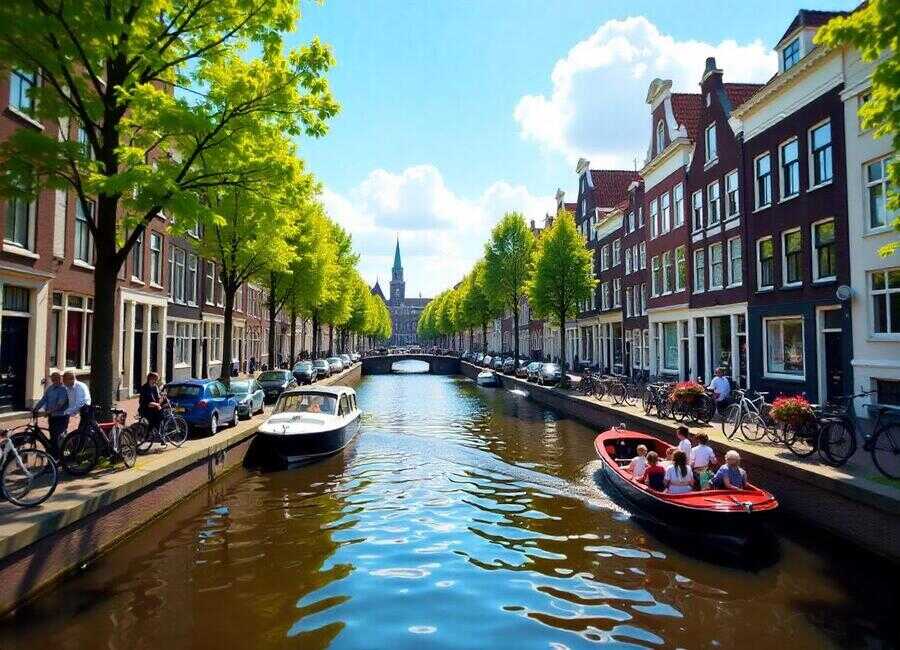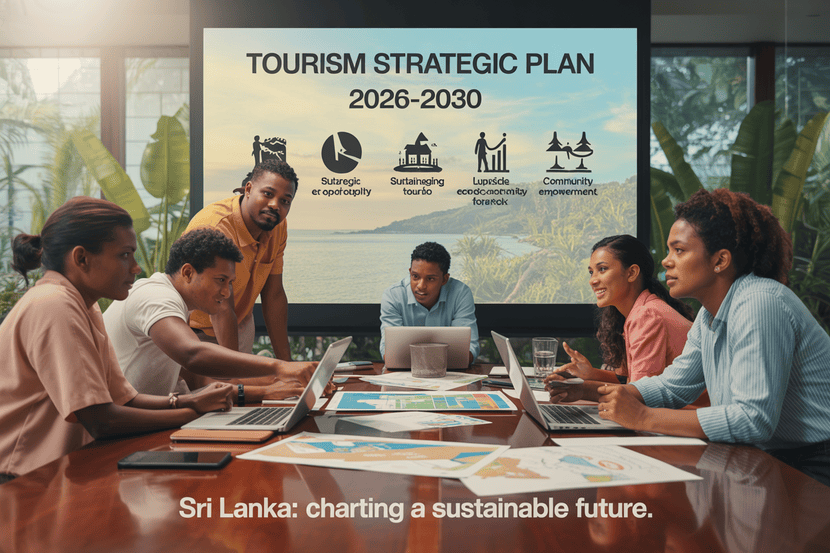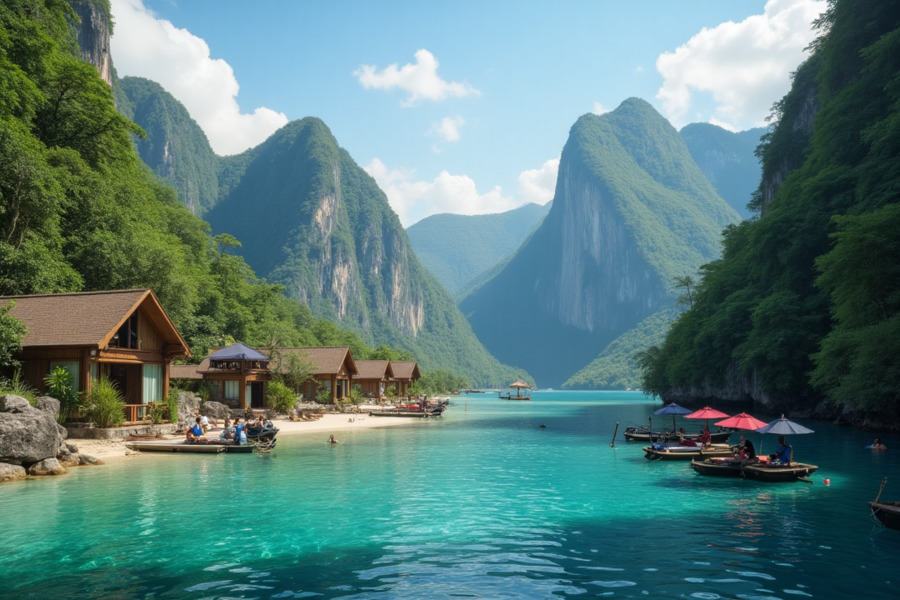≡-Netherlands Shifts Focus From Crowded Amsterdam To Coastal Towns, Forest Trails, And Historic Cities In Bid To Attract US Tourists – Viral of Today
<> Viral of Today <>
Home » AIRLINE NEWS » Netherlands Shifts Focus From Crowded Amsterdam To Coastal Towns, Forest Trails, And Historic Cities In Bid To Attract US Tourists Saturday, July 5, 2025In a bold shift to redefine its tourism landscape, the Netherlands is steering American travelers away from overcrowded Amsterdam and toward the country’s serene coastal towns, lush forest trails, and culturally rich historic cities. This strategic move not only alleviates pressure on the capital but also aligns with growing U.S. demand for sustainable, off-the-beaten-path experiences—offering visitors a more authentic Dutch adventure while boosting local economies beyond the typical tourist hotspots.How the Netherlands Is Quietly Redefining Tourism to Lure American Travelers Beyond Amsterdam in Summer 2025The Netherlands is embracing a subtle yet strategic transformation in its tourism approach this summer, aiming to attract American visitors by highlighting hidden gems, eco-conscious experiences, and regional culture. Moving beyond its traditional reliance on Amsterdam, Dutch tourism authorities are now focused on spreading international travel demand throughout the country in a way that aligns with both sustainability and local well-being.A New Kind of Dutch Invitation for American TravelersRather than bold, flashy marketing, the Netherlands is using refined, data-driven campaigns to attract U.S. tourists seeking meaningful and low-impact travel. In a coordinated summer initiative with countries like France, Spain, Greece, and Canada, the Netherlands is targeting Americans around the July 4 travel boom. The effort is rooted in positioning Europe—especially quieter, scenic parts of the Netherlands—as a safe, sustainable, and culturally rich travel alternative.The Netherlands Board of Tourism & Conventions (NBTC) is working closely with partners like Amadeus to deliver this tailored message to specific American audiences. The goal: unveil the true essence of the Netherlands by venturing beyond Amsterdam’s tourist-packed avenues into its untapped, authentic heartlands.From Iconic Amsterdam to the Calm of Coastal Towns and Forest TrailsOne of the key messages being promoted is to encourage travelers to bypass overly saturated tourist zones in favor of what officials call “hidden Dutch gems.” These include:Zeeland’s coast, with its scenic beaches and peaceful villages;The Veluwe, a region known for its expansive forests, cycling trails, and wildlife;Friesland, home to serene lakes and traditional waterways perfect for sailing;Historic cities like The Hague and Utrecht, offering a vibrant mix of museums, local markets, canals, and heritage without the over-touristed feel.This regional shift isn’t just about aesthetics—it’s backed by policy and reinforced by hard numbers. Amsterdam has seen a dramatic decrease in short-term rental nights, dropping from 2.5 million in 2019 to just 1.4 million in 2024, according to a report. Meanwhile, total short-term stays across the rest of the country hit a record 11 million nights, revealing the success of encouraging exploration outside the capital.Why Sustainable Travel Matters in the Dutch StrategyCentral to the Dutch tourism strategy is sustainability. Understanding that a growing number of American travelers prioritize sustainability, the Netherlands is actively championing environmentally responsible tourism by spotlighting:Train travel instead of flights between cities;Cycling routes as a way to explore local landscapes;Eco-friendly hotels and lodges that offset carbon emissions or use renewable energy;Local cuisine and community-based experiences, giving travelers the opportunity to support smaller towns and businesses.This sustainability-first approach aligns well with the values of a growing segment of U.S. travelers—especially Millennials and Gen Z—who prioritize ethical travel.Smart Marketing Meets Smart TourismUnlike past campaigns which cast a wide net, the Netherlands is now leveraging technology to fine-tune its outreach. NBTC has partnered with analytics firms and travel platforms to identify key interest groups in the U.S.—families seeking cultural holidays, solo travelers looking for adventure, or remote workers wanting a change of scenery.Using targeted digital ads and curated content, the Netherlands is reaching out with personalized itineraries that emphasize regional diversity, affordability, and responsible travel. For instance, ads targeting New Yorkers may focus on The Hague’s art scene, while those aimed at California audiences might promote cycling in the Veluwe or sailing in Friesland.The shift toward intelligent, intent-based marketing allows the Dutch tourism board to allocate resources more efficiently and maximize engagement without overburdening infrastructure.Rethinking Urban Tourism: Amsterdam Leads by RestrictingAlthough Amsterdam remains a global icon, the city is actively discouraging certain types of tourism. In recent years, local authorities have introduced strict regulations on Airbnb rentals, limited group tours, and even launched public campaigns urging disruptive tourists to “stay away.” These policies aim to protect residents’ quality of life while preserving the city’s cultural integrity.The broader national strategy follows suit. By gently redirecting the flow of visitors to lesser-known destinations, the Netherlands can accommodate increased tourism without compromising its values.Regional Tourism Gains MomentumRegional cities and areas are already reaping the rewards of this strategy. In The Hague, stylish accommodations like the art-deco-inspired Hotel De Plesman are offering a refined urban escape with beach access—something even Amsterdam can’t provide. Friesland, often overlooked by international visitors, is seeing a resurgence of interest thanks to its unique blend of lakes, historic architecture, and local festivals.Domestic tourism data supports this pivot. In 2024, Dutch holidaymakers spent over €15.3 billion on travel within the country, averaging €1,500 per person. This surge in local travel has helped reinforce infrastructure and diversify the tourism economy, making it more resilient to fluctuations in international visitor numbers.Tapping into the July 4 Holiday WindowTiming has been critical. Launching the campaign just ahead of U.S. Independence Day was a calculated move. With many Americans planning their summer vacations in late June and early July, Dutch tourism leaders saw an opportunity to position the Netherlands as a culturally rich, eco-friendly, and peaceful alternative to Europe’s more congested travel hotspots.Moreover, with reports indicating fewer Dutch nationals are planning trips to the U.S. this summer, the campaign also serves to rebalance the travel exchange—bringing more Americans into the Netherlands at a time when the nation is well-prepared to host them responsibly.A Blueprint for Responsible GrowthThe Netherlands is not only shifting the travel narrative—it’s setting a global example for responsible tourism. The blend of policy changes, digital marketing innovation, and regional development efforts ensures that the country can welcome more visitors without the risks of overtourism.To ease overtourism in Amsterdam and meet the rising demand for meaningful, eco-conscious travel, the Netherlands is inviting American tourists to explore its scenic coastlines, forested landscapes, and historic regional cities. This approach balances visitor growth with cultural preservation and sustainability.American tourists searching for a more relaxed, meaningful, and sustainable European escape are finding the Netherlands an increasingly attractive option. As they explore outside Amsterdam—whether cycling through the Veluwe or enjoying Zeeland’s coastal charm—they’re participating in a new kind of tourism: one that values experience over spectacle, connection over crowds, and sustainability over saturation.«Enjoyed this post? Never miss out on future posts by following us»
This information will surprise you!
See also
- Read until the end to discover everything.
- Important information you need to know.
- Interesting facts and helpful tips.
Conclusion
Did you enjoy the news? Keep following us daily!













